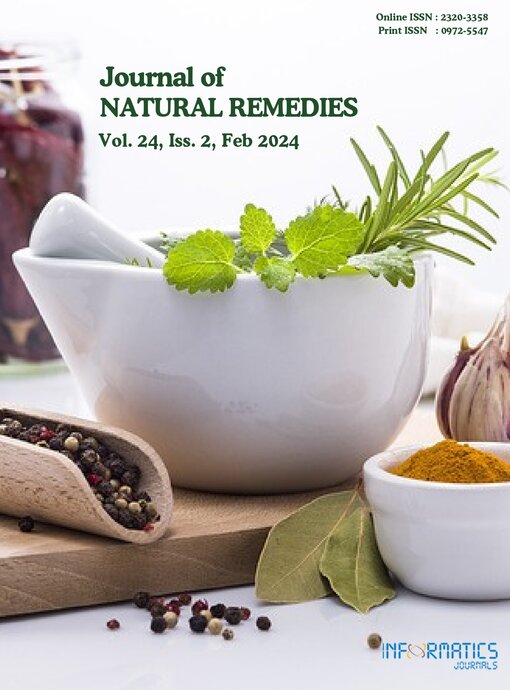Management of Kotha Roga (Necrotizing Fasciitis) by Modified Ksharapichu (Wound Packing): A Case Report
DOI:
https://doi.org/10.18311/jnr/2024/34920Keywords:
Kshara, Kshartail, Kothroga, Necrotizing FasciitisAbstract
The present case report was a 25-year-old male patient with severe pain at the right index finger, fever, oedema, and discharge, not having any history of surgery, hypertension, diabetes, or any systemic disorder was diagnosed with kotha roga (necrotizing fasciitis). Presently available treatment for this is broad-spectrum intravenous antibiotics, appropriate hydration support, and meticulous surgical debridement with regular wound packing. But because of contaminated wounds and poor prognosis, herbal therapies have a possibility to cure kotha as they are readily available, and inexpensive. In this case, a kshara formulation i.e., modified ksharpichu was chosen as an atrial medication to be applied locally after everyday cleaning and dressing. It was observed that ksharpichu acted as a debriding agent and healing as well. The case was followed up for 30 days. This study employed pretty simple criteria to gain preliminary observations on the effectiveness of this Kshara taila on kotha roga.
Downloads
Metrics
Downloads
Published
How to Cite
Issue
Section
License
Copyright (c) 2024 Pooja Shrivastav, Suyog Yawale, Suraj Tichkule, Shweta Parwe (Author)

This work is licensed under a Creative Commons Attribution 4.0 International License.
Accepted 2023-10-10
Published 2024-02-01
References
Hakkarainen TW, Kopari NM, Pham TN, Evans HL. Necrotizing soft tissue infections: Review and current concepts in treatment, systems of care, and outcomes. Current Problems in Surgery. 2014; 51(8):344-62. https:// doi.org/10.1067/j.cpsurg.2014.06.001 DOI: https://doi.org/10.1067/j.cpsurg.2014.06.001
Shastri A. Sushruta Samhita. Chikitsasthana. 1/25. Chaukhamba Sanskrit sansthana: Varanasi. 2003; 1:989.
Shastri S, Sharma K. Original Text and Dalhana’s Nibandhasangraha Commentary with Hindi Translation. 1st Ed. R.A.V. Publication: New Delhi. 2002. p. 78.
Shastri S, Sharma K. Original Text and Dalhana’s Nibandhasangraha Commentary with Hindi Translation. 1st Ed. R.A.V. Publication: New Delhi. 2002. p. 78.
Shastri A. Sushruta Samhita. Chikitsasthana. 1/25. Chaukhamba Sanskrit sansthana: Varanasi. 2003. 1:989.
Sharma A, Sharma P. Sushruta Samhita. Sutrasthan. 21/7. Choukhamba Surbharati Prakashan: Varanasi. 2001. 1:298.
Sharma A, Sharma P. Sushruta Samhita. Sutrasthan. 13/7. Choukhamba Surbharati Prakashan: Varanasi. 2001. 1:93.
Asolkar L, Kakkar K. Second Supplement to Glossary of Indian Medicinal Plants with Active Principles, Part- 1. CSIR: New Delhi. 1992. p. 167.
Wong CH, Khin LW, and Heng KS. The LRINEC (Laboratory Risk Indicator for Necrotizing Fasciitis) score: a tool for distinguishing necrotizing fasciitis from other soft tissue infections. Am J Surg. 2008; 3(4):239-44.
Wong CH, Yam AK, Tan AB, Song C: Approach to debridement in necrotizing fasciitis. Am J Surg. 2008; 5(3):1541-7. https://doi.org/10.1016/j.amjsurg.2007.08.076 DOI: https://doi.org/10.1016/j.amjsurg.2007.08.076
Asolkar L, Kakkar K. Second Supplement to Glossary of Indian Medicinal Plants with Active Principles, Part- 1.1992. CSIR: New Delhi. 1992. p. 167.

 Pooja Shrivastav
Pooja Shrivastav









 0.35
0.35 24
24 0.161
0.161